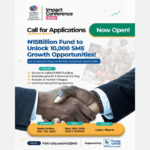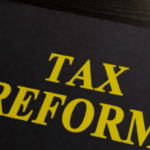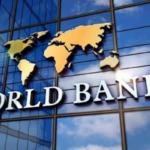As Nigeria enters a new phase of monetary policy easing, the Central Bank of Nigeria (CBN) is working to attract global investors through a mix of reforms, improving macroeconomic indicators, and renewed policy credibility.
Read also: Champion Breweries plans N58bn capital raise for Bullet brand acquisition
Reforms and economic indicators
The CBN’s exchange rate unification policy and measures to reduce inflation are beginning to open the economy to greater global investor interest. With the re-emergence of monetary policy easing after a five-year break, Nigeria is signalling a push to attract investments, lower lending costs, and support broader economic growth.
Despite a decline in crude oil prices, Nigeria’s economy has remained steady in recent months. Indicators such as GDP growth, a drop in inflation, relative exchange rate stability, increased external reserves, and rising capital inflows point to an economy regaining momentum.
Aminu Gwadabe, President of the Association of Bureaux De Change Operators of Nigeria, said monetary policy implementation has improved significantly, strengthening economic resilience. “Findings show that in the past, many economies were reluctant to let their exchange rates move freely. But with better-anchored inflation expectations and stricter macroprudential regulation, Nigeria has increasingly allowed the exchange rate to act as a shock absorber, while the central bank has shifted its focus toward stabilising economic activity,” he said.
Read also: Providus–Unity merger positions bank for NGX Debut
The first rate cut in five years
The CBN’s Monetary Policy Committee (MPC) last month cut the benchmark interest rate by 50 basis points from 27.5 percent to 27 percent, marking the first rate cut since the tightening cycle began five years ago. The decision reflects a shift towards supporting growth amid easing inflationary pressures.
This move followed five consecutive months of slowing inflation, with projections indicating continued disinflation through the rest of 2025. The CBN aims to stimulate economic activity by lowering borrowing costs, improving banking sector liquidity, and supporting consumer spending and investment.
Adeyemi Adeniran, Statistician-General of Nigeria and CEO of the National Bureau of Statistics (NBS), said headline inflation fell from 21.88 percent in July to 20.12 percent in August. “Headline inflation (year-on-year) moderated further to 20.12 percent in August 2025, from 21.88 percent in July, driven by the decline in both food and core inflation,” he said. He added that second-quarter GDP grew by 4.23 percent, up from 3.13 percent in the first quarter, the strongest quarterly growth in four years.
Read also: Africa Capital Alliance completes $299m exit from Aradel Holdings
CBN’s policy direction
CBN Governor Olayemi Cardoso explained that the MPC’s decision followed a review of macroeconomic developments. “The committee’s decision to lower the monetary policy rate was predicated on the sustained disinflation recorded over the past five months, projections of declining inflation for the rest of 2025, and the need to support economic recovery efforts,” he said.
Bukola Bankole, Partner and Corporate Finance Expert at TNP, described the rate cut as “a modest but symbolic move” that signals a shift from prolonged tightening. “For investors, Nigeria’s yield story remains unchanged because even after the cut, local instruments remain among the most attractive across frontier and emerging markets,” she said.
According to her, “Inflation in Nigeria is not demand-driven; it is cost-push, reflecting exchange rate volatility, subsidy removal effects, high energy costs, and food supply disruptions. Against this backdrop, further hikes would have been the wrong medicine.”
Read also: Providus, Unity Bank shareholders approve merger
Strengthening policy foundations
The CBN recently hosted the Monetary Policy Forum 2025 under the theme “Managing the Disinflation Process,” bringing together policymakers, private sector players, and development partners. Cardoso said the Bank’s focus remains on sustaining price stability, transitioning to an inflation-targeting framework, and restoring purchasing power.
“Managing disinflation amidst persistent shocks requires not only robust policies but also coordination between fiscal and monetary authorities to anchor expectations and maintain investor confidence,” he said.
To strengthen the financial system, the CBN has also introduced new minimum capital requirements for banks, effective March 2026. The reforms aim to enhance resilience and prepare the sector for Nigeria’s goal of becoming a $1 trillion economy.
“As we shift from unorthodox to orthodox monetary policy, the CBN remains committed to restoring confidence, strengthening policy credibility, and staying focused on its core mandate of price stability,” Cardoso stated.
Outlook and growth prospects
The non-oil sector expanded by 3.64 percent in the second quarter of 2025, contributing 95.95 percent to GDP. Agriculture grew by 2.82 percent, while the industrial sector nearly doubled its growth to 7.45 percent.
The Chairman of the Nigeria Economic Summit Group (NESG), Niyi Yusuf, said the results show progress but called for sustained reforms. “We need to stay the course, maintain momentum, and drive for broad-based growth across all sectors,” he said.
The World Bank also projected steady growth for Nigeria, forecasting 3.6 percent in 2025, 3.7 percent in 2026, and 3.8 percent in 2027.
With policy reforms taking root, Nigeria’s renewed focus on macroeconomic stability and investor confidence could mark a turning point for the economy’s long-term growth trajectory.










